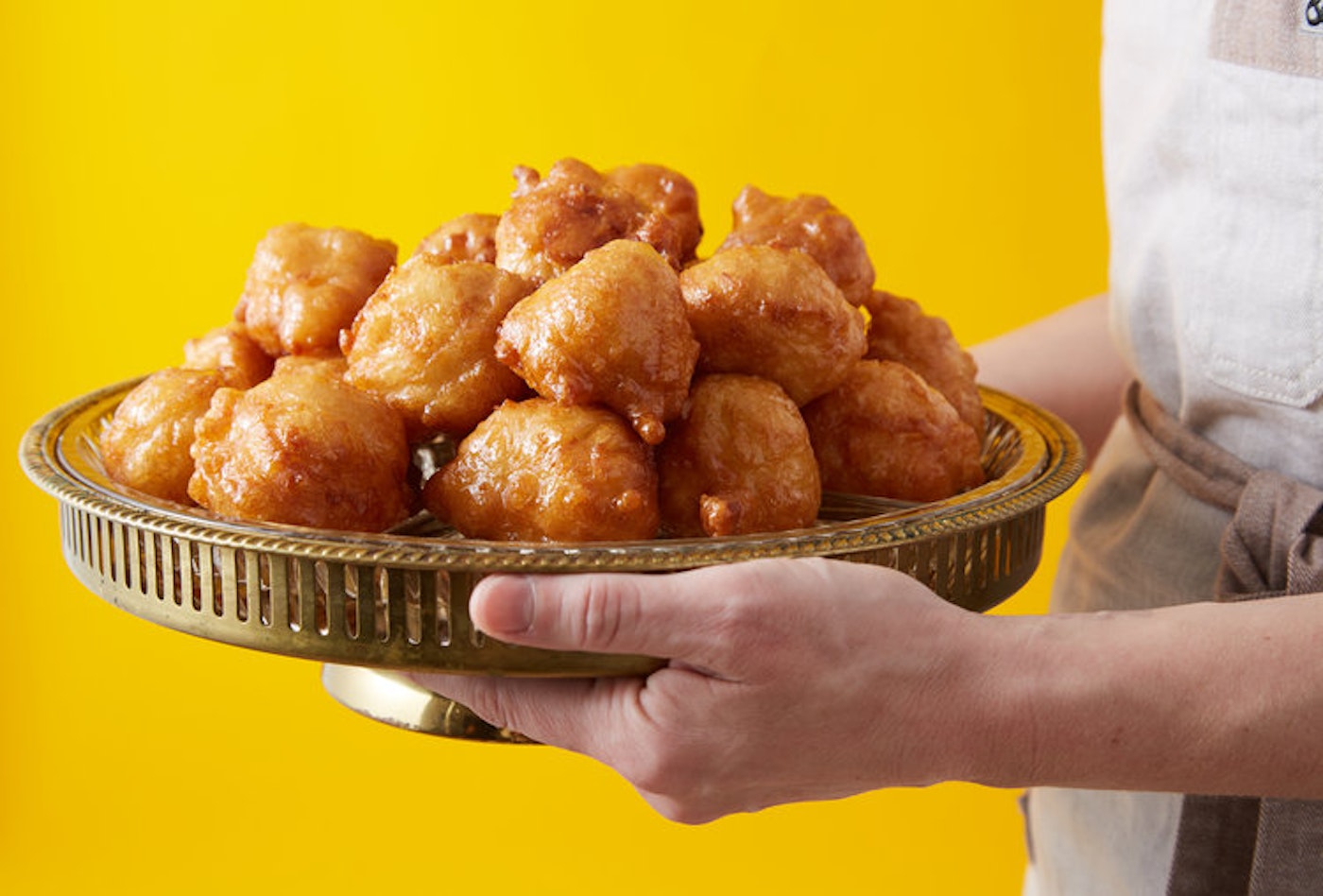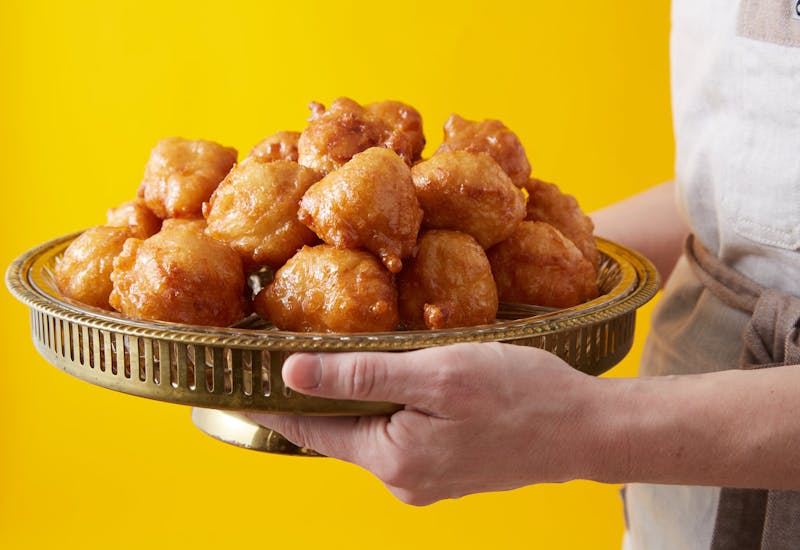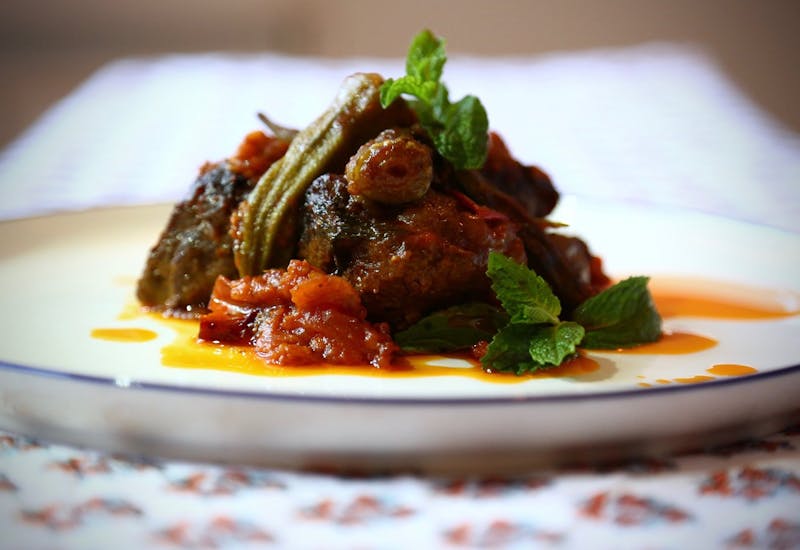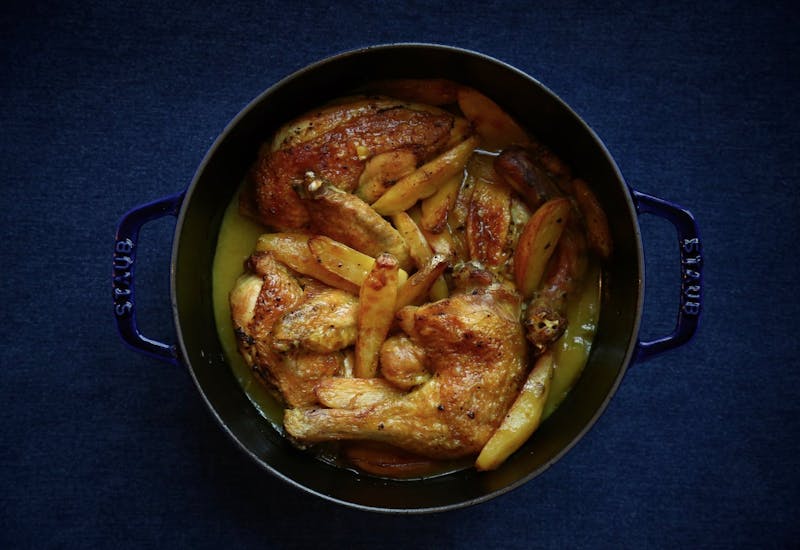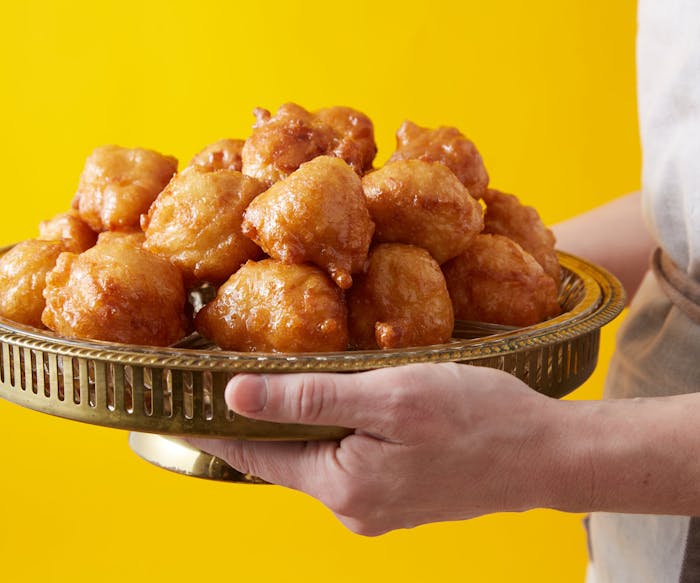The kitchen in Nir Mesika’s childhood home near Haifa extended beyond its four walls — a seven minute walk in one direction and a five minute drive in another the homes of his grandparents. “Both families used to live in the kitchen,” Nir, who is the chef and owner of New York’s modern Israeli restaurant Timna, says.
On Hanukkah, pans of oil bubbled in both of his grandmothers’ kitchens. His Moroccan grandmother Mazal fried sfinge, a light doughnut, round with a hole in the center. Nearby, Rubi, Nir’s Egyptian grandmother would drop small bubble gum-sized balls of dough into the hot oil to make zalabia that were dressed with a syrup of honey and served after lighting the menorah.
While zalabia is popular with many Jewish families from the Maghreb to India for Hanukkah, Nir explains that Rubi learned her recipe from her Muslim neighbors in Alexandria who would make the sweet during Ramadan. “Even for the Jews, it was a really exciting month,” Nir explains recalling stories his grandmother told him growing up of an era where relations between Jews and their Muslim neighbors in Egypt were easier.
It’s a recipe Rubi brought with her to Paris where she lived for a year and finally to Israel, where she settled in 1951. She made it not only for Hanukkah but also for a Friday afternoon snack to tide Nir and other family members over to dinner, and for mimouna, a celebratory meal with many sweets to end Passover.
When Nir moved to New York City in 2012, it was around the time of mimouna that he realized he missed his grandmother’s cooking, particularly her zalabia. He called Rubi for the recipe and put a riff on her doughnuts on the menu at his restaurant. He’s continued to play with it, swapping his grandmother’s rosewater with floral orange blossom water in a recipe he shared with us.
Nir is the keeper of Rubi’s zalabia. “This recipe got a little forgotten,” Nir explains. “Basically, I’m the only one who makes it in the family.”
Find more Hanukkah recipes in our holiday collection.
